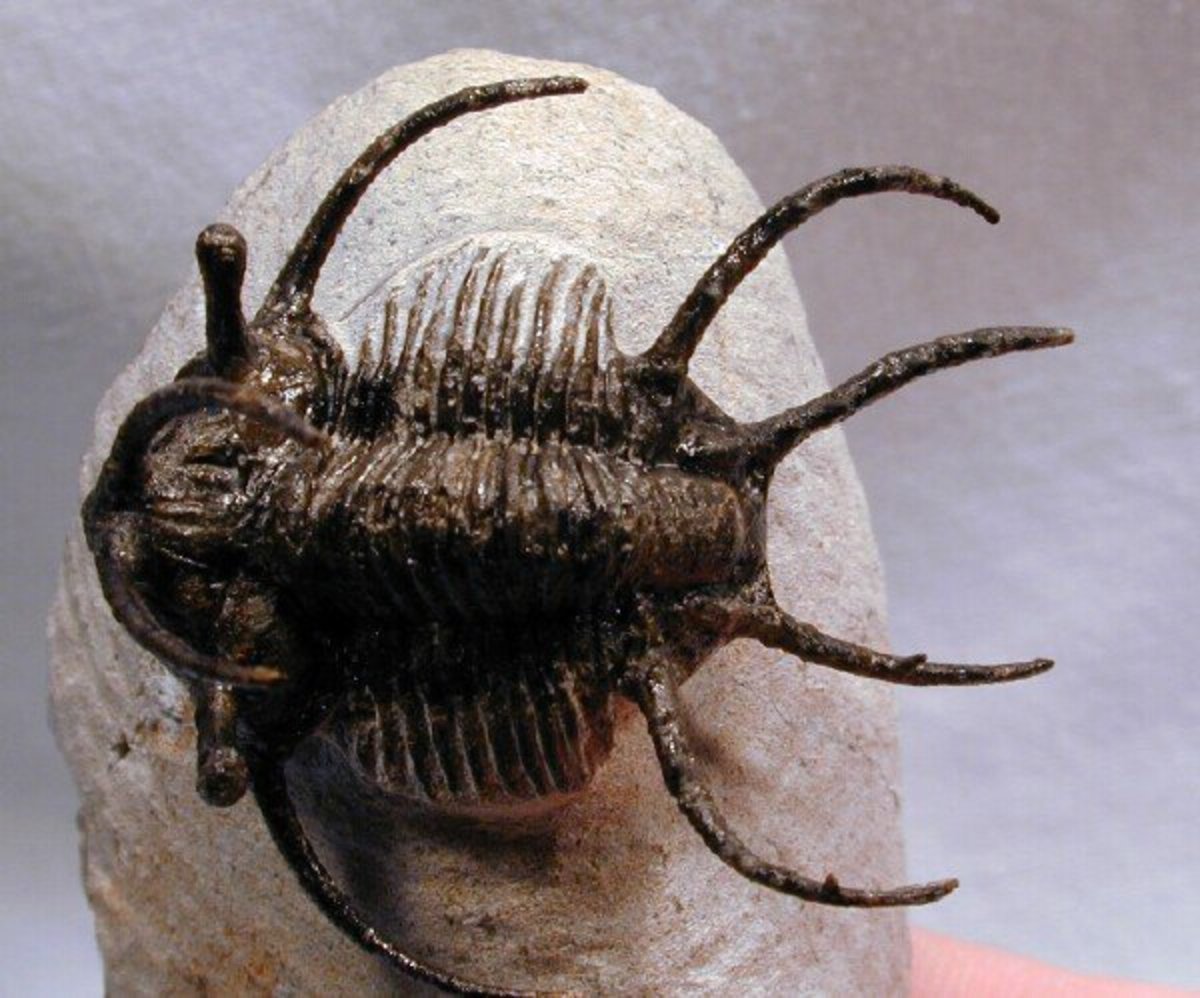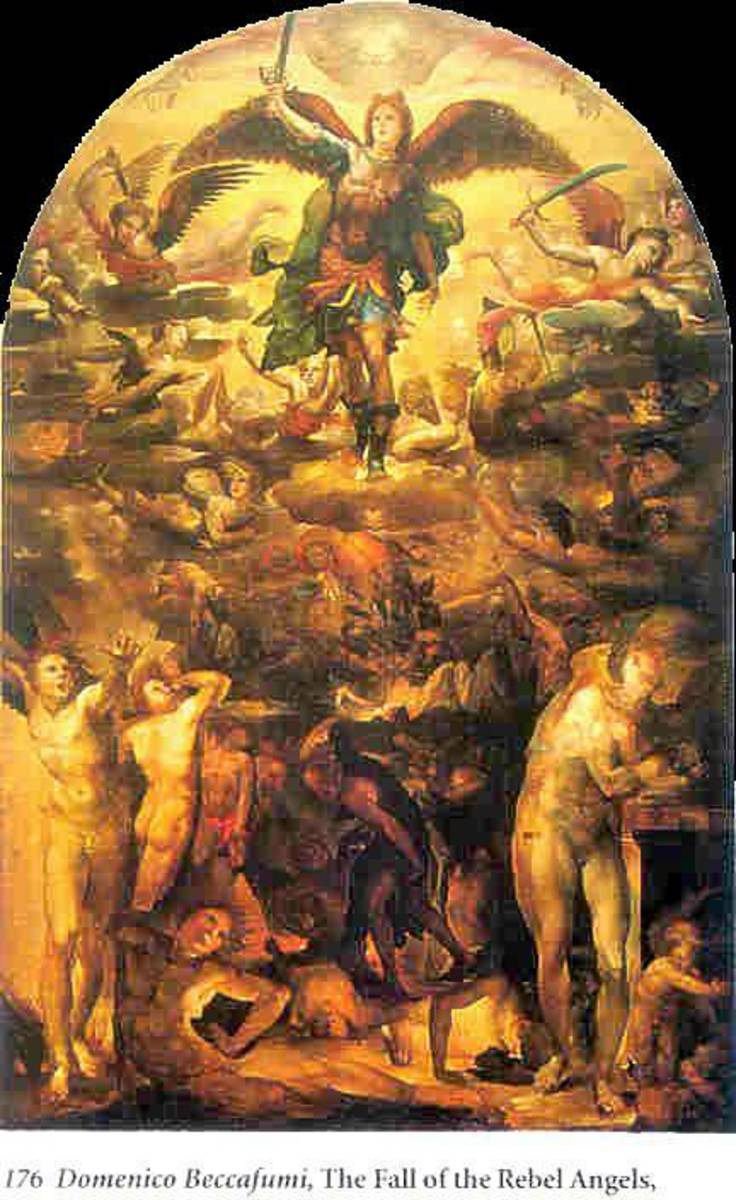Jenny Who? The Search For Jenny Haniver
How I came to know Jenny
I am without a shadow of a doubt a thrift store junkie. It is not uncommon to see me terrasquing the used book section of the local Goodwill being ever watchful for that one book my collection just can't do without. Recently on one of my trips to the Goodwill I stumbled on a very interesting volume dealing with strange oddities and unsolved mysteries, two subjects very dear to my heart. I had a very sizable amount of books already safely tucked under my arm so I figured one more just couldn't hurt. I went to the counter and paid for my horde of new reading material.
While on the car ride home I could not wait to pry open my new book and explore the mysteries it held within it's yellowed pages. This beautiful collection of text chronicled strange rituals, Bigfoot, UFOs, and even ghosts. It was like I had just chased a white rabbit down the paranormal rabbit hole and I was happily on my way to wonderland. While I was reading I came across a term I was unfamiliar with, which really took me by surprise. In all truth it wasn't has much a term as it was a name. Jenny Haniver. My first impression was “Wow, what a unique name.” Suddenly visions of a fair maiden filled my mind.
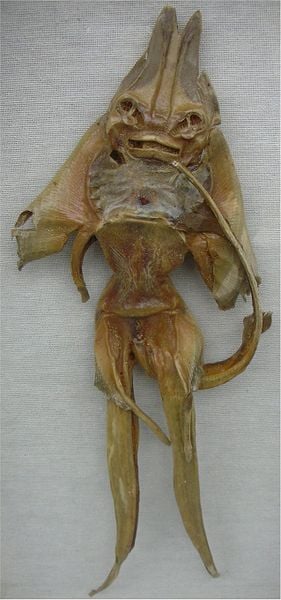
Jenny is a what?
Oddly enough that image did not last very long. I soon discovered the term Jenny Haniver was far from the name of a beautiful maiden dancing about the room just for me. But hey, a man can dream can't he? The term is actually used to describe a creature crafted by mutilating or adding to the corpse of another creature. In most cases the body altered is that of a ray or a skate. The creature is molded into forms ranging from dragons to devils and anything in between. During the Renascence and Baroque periods these tiny beings were all the rage and highly sought out.
One thought on the origin of the term comes from the French phrase, “jeune d'anvers (young person of Antwerp)” The name Jenny Hanvers, or in some cases Jenny Haviers. Soon we would have our modern term Jenny Haniver.
The Antwerp docks served as the breeding ground for these makeshift terrors for centuries. Sailors would carve mermaids out of dead skates. After the carving they would seek to preserve their artwork by applying a thick coat of varnish, which also served to give it an aged look. In a single day an artisan can craft 5 to 10 of these gruesome masterpieces. It was a common sight to see an artisan making a living from selling their Jennies to sailors and visitors to the docks. Some of the buyers knew better than to believe what they had just acquired was anything but a fake, but they would gladly pay top dollar just to be part of the story. It is just like the people who buy haunted items from E-bay. They know they are merely buying a regular old item but to have a story to tell is worth the extra cash. Of course a great deal of people who bought these items were unaware that they were simply buying the body of a skate or ray. To them they had just gotten their hands on a dragon or a demonic fairy.
A strange craft indeed.
The earliest known picture of a Jenny Haniver appeared in Pierre Belon's “De Aquatilibus” in 1553. It was of a creature supposedly captured in Norway that would come to be known as the sea monk. It wore scaly clerical robes, a monk's shaven crown, human like arms and face, and a fish like tail. The creature lived three days before passing on according to it's owner.
In 1558 Konrad Gesner released “Historia Animalium Vol. 4” In his text he issued strong warnings against the buying of Jenny Hanivers. He expressed serious concerns that these dragons and fairies should be regarded for just what they are, fakes. He addressed the issue very clearly and stressed a desire to move past the belief in “fairy tales and fairy tale creatures”. He felt that Jenny Hanivers served to further the belief in these atrocities.
16th century mathematician and physician Hieronimus Cardanos described them as “two-footed creatures with very small wings, which one could scarcely deem capable of flight, with a small head.... like a serpent, of a bright color, and without any feather or hair”. While his description lacks the real detail these creatures capture it did serve as a wake up call to many people.
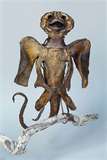
The Jenny Biz picks up
Despite ridicule and warning the buying and selling of Jenny Hanivers continued to flourish. One rather peculiar story I stumbled on while researching the net was one of a family in Hamburg who had in their possession a hydra. A hydra is a mythical beast with several heads. For each head removed two more grow back. That being said of course people would come from near and far to see such a fascinating piece of lore. Wouldn't you?
One such visitor was Linnaeus. (famous naturalist who invented the zoological classification system.) He was very eager to see this hydra. Sadly what he found was anything but impressive. He was very quick to point out that what the family really had was a shrude creation. It was the end result of snakeskin and bird claws. He pronounced their prized possession a fake. This angered not only the family but mane people who saw the hydra as authentic. The family threatened prosecution and Linnaeus had to flee the city to avoid any more trouble. This is a prime example of how serious these Jenny Hanivers were looked at by certain people.
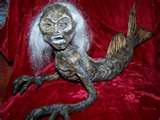
Come One Come All
One of the most famous and notorious Jenny Hanivers was that of the Fiji mermaid. The Fiji mermaid was nothing more than the torso of a monkey sewn onto the tail end of a fish. The first of these merfolk would come to rest in the possession of circus great P.T. Barnum. Barnum, who had a knack for the sideshow game, proudly displayed the macabre piece in his collection. It became a very prominent display piece.
The mermaid came to rest in Barnum's possession through a Boston correspondent by the name of Moses Kimball in the late Spring of 1842. June 18th would see the final written contract between Kimball and Barnum. This deal would allow Kimball to retain the ownership of the Fiji mermaid but allow Barnum to lease it for $12.50 a week. Thus the Fiji mermaid hit the big top and Barnum would roll in the money from the countless hordes waiting to see the aquatic beast,
Barnum was a skilled barker and soon crafted a background story for his newest display. It was captured by Dr. J. Griffin. In reality Griffin was actually Levi Lyman, a close associate of Mr. Barnum. Of course with the gifted voice and character of Barnum people had no issues believing his every word. Day by day folks would come to see a real mermaid. Barnum was literally making a fortune of the simplest attribute to his collection.
The Fiji mermaid was the first of a very long line of copycats. The Ban ff mermaid rest on display at the Indian Trading Post. It mimics the original Fiji mermaid to the key. As for the original mermaid. It was lost in 1860 after a fire engulfed the Barnum warehouse. It resurfaced at Harvard University's Peabody Museum of Archeology and Ethology.
Similar mermaids have been displayed in countless sideshows and personal collections. Coney Island's sideshow boast it;s own. Bobby Reynold's traveling sideshow and even the great Robert Ripley of Ripley's Believe it or Not have displayed Fiji mermaids at some point. I myself had the privilege of seeing one at Ripley's museum in the Gattlinberg area. It was a rather interesting experience. I can honestly say I can see how some people would be fooled by this creation.
The Fiji mermaid is not only a star of the roadshow, it is a big screen sensation. In the episode “Humbug” on the very popular X-Files television show alluded to the creature. In Rob Zombie's first directed film “House of 1,000 Corpses” one of the characters is killed and his body is used to craft a life size Fiji mermaid.
Conclusion
Regardless of being obvious fakes Jenny Hanivers remain a stable of the cryptozoological community. China still sales them at an alarming rate. Maybe the pursuit of Jenny Hanivers is the desire to believe. Perhaps it is the thrill of owning something odd. Either way the Jenny Haniver has survived centuries of ridicule and judgement to find a curious spot on her dusty shelves and a less conspicuous one in our hearts, happy hunting.

